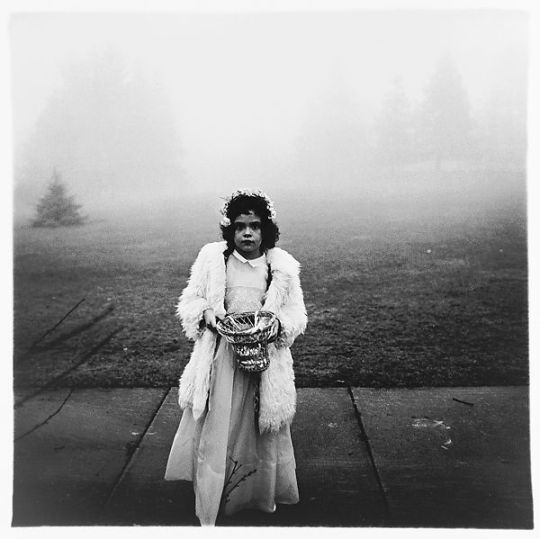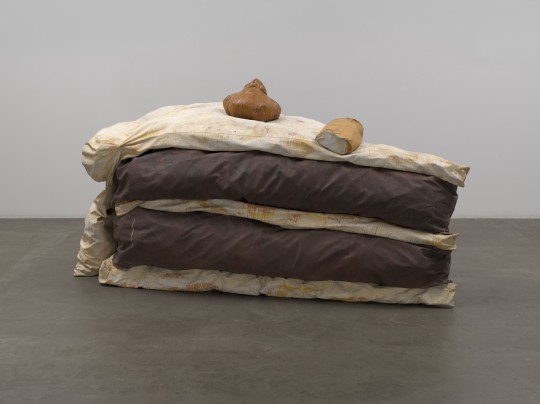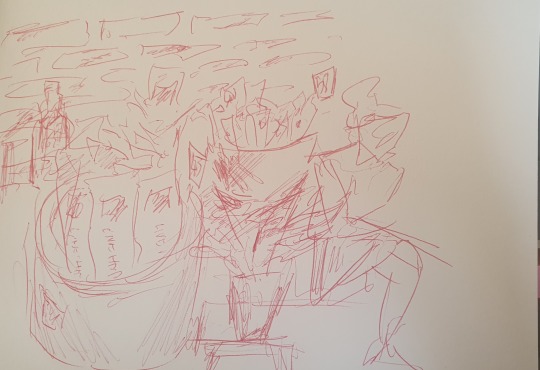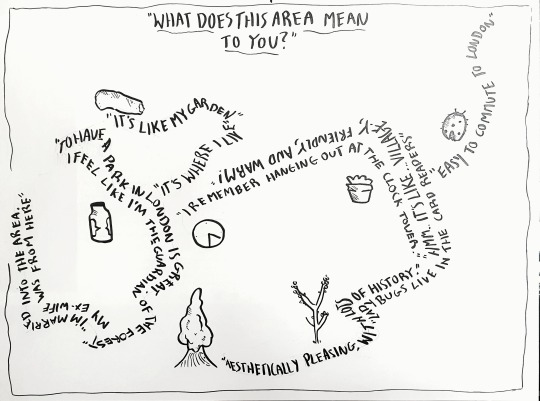Link
0 notes
Text
Notes:
Does it matter if a photo is authentic or staged if it illicits its desired reaction?
Disconnection/desensitisation towards war photos
Instant updates and news
Can you tell if a photo is authentic, rather than proving it's staged?
Plans for photo essay:
Recording, surveillance, how people feel about getting their photo taken, attitudes on amateur photography over the decades
0 notes
Text

[1] "A flower girl at a wedding" (1964) by Diane Arbus.
In On Photography, Sontag quotes Diane Arbus's statement on photography and voyeurism: “I always thought of photography as a naughty thing to do—that was one of my favorite things about it… and when I first did it I felt very perverse.” (pp.18)
Arbus articulates how taking a photo can feel invasive or intrusive towards its subject; linking with Sontag's idea that photography is truth, Arbus implies that the genuine and personal nature of photography enhances the experience of her own works.
One of her photos, "A flower girl at a wedding" (1964, printed 1988), is a black and white image which shows a young girl in a flower crown holding a basket, standing on a pavement with heavy fog blocking the background of trees and short grass. The girl isn't posing or smiling, with the fog making the piece feel all the more imposing. She is seen leaning her body to one side, with her collar and coat being asymmetrical. She is meant to be at a wedding despite being fully alone; there is no other subject of interest other than her. Where is her family, or her parents?
Bibliography: [Figure 1]: Arbus, D. (1964) A Flower Girl at a Wedding [Photograph].
Sontag, S. (1973) On Photography. New York: RosettaBooks LLC.
0 notes
Text
[Archive of Manifesto by (in order of chapter) Paris, Beverly and Edward]
P.E.B.B.O the [meaningless or meaningful] manifesto Chapter i: let us see Claiming a strong commitment to diversity The museum is accessible and open and free But what do I see? Clays and tablets, lined up, in stacks, Some of those stones ought to be put back. I want to see, I want to see Let me see me When you walk between the grand ivory doors And step into those warm toned, stone spaces What do you see? Scripture and language from ages of eld, Some of which ought to never be held. Chisels and tools and contraptions galore, that I don't want to see over here anymore. We want to see, we want to see Let us see we The gallery is everyone and anyone, but I only see some Picking and choosing the best of their best to show to the rest: Do they know what they see? Soup tins and paintings all painted in blue, Many things I have already seen too. I want them to see, I want them to see What is a sense of diversity Without all of Us and Ours and We I ought to present, and make it be So everyone to everyone can always see. Chapter ii: the 8 Whys It’s getting to the point where I’m dying to scream the things I’m about to list at the top of the highest rooftop to make the whole world open it’s polluted eyes to see the endless problems it has! 1. I don’t understand…Why aren’t there more of us sitting at the same table as those pretentious white men that just need to put a paint splatter on a canvas, call it art, get millions for meaningless crap and have the whole nation in awe of it? 2.Why aren’t we the first to be chosen as the delicate subject sitting in a floral armchair or running in a field of sunflowers and painted in dainty blues and pinks just being and looking ‘pretty?’ 3. Why do we need extra support just to be seen and achieve what we love? 4. Why does race need to be included when mentioning an artist that isn’t white ? 5. Why do we need to talk about our struggle to be seen or heard THE PROBLEMS NEVER GETS SOLVED ANYWAY! 6. WHY CAN’T OPPORTUNITIES BE HANDED TO US LIKE HOW RICH CHILDREN HAVE THEIR MUMMIES AND DADDY’S SEND THEM TO ART SCHOOL AND MAKE ART THAT THEY CALL ‘URBAN’ just from going to south London once oh please if you want urban work let’s be real what type of people would you associate ‘urban’ with? Yeah , exactly. There are so many people of colour making artwork true to who we are and are people seeing us? No. 7. Why aren’t things changing already ? Why are we in this exhausting constant limbo of seeing but not acting? 8.WHY WHY WHY WHY WHY ? Chapter iii: for the deep thinking art gazers and gallery goers When I make art You ask so you can understand and you understand that you can’t You think you see something greater in the work But it’s really just a sheep in a field You seem to think it’s a work of an intellectual That I transcend and break boundaries Using big words and concepts that link so tenuously But really, it’s just a sheep in a field You give me words like pop art, surrealist, futurist, abstract Someone like me who’s unheard of Expecting me to make art surrounding the prejudices I face daily That I’m expected to make something that reflects my life story You put my work there as if it were a trophy of your culturedness Prizing it, exoticisng my cultural identity And you view me in a zoo But really, I’m only painting a sheep in a field You insist time and time again to give my art a deeper theme A theme someone else and many others have done And when I don’t, it is no longer art But I’m still going to paint a sheep in a field You pay so much for a dense collection that is self explanatory You pay far greater from the established You project your intellectualised language onto my work My works are seen as low art and I paint sheep You pride yourself on selection and variety But you sweep whatever’s different under a rug, shunned The artworks are your grammar and I become your specialist language
0 notes
Text
Working in a randomly chosen group was less daunting than I expected. We managed to work very well together and despite our concerns on time, managed to collaborate easily via messaging and Google Docs, allowing our group to edit and discuss structure in real time.
0 notes
Text

Claes Oldenburg is a pop artist commonly known for his large sculptures of food and objects exhibited in public areas. In his manifesto "I am for Art" from the book titled "100 Artists' Manifestos", he describes various experiences and objects as unconventional pieces of art that are not exclusive to paintings hung in a gallery. Historically, Obdenburg's art also inspired the idea that sculpture did not have to be made of hard stone, but could be made of soft fabric, as seen in his 1962 sculpture "Floor Cake" (pictured). His works and his manifesto both share the idea that he stands "for an art that imitates the human'' (Danchev and Danchev, 2011) Personally, I relate to the idea that art is a medium that can be creatively expanded by interaction, found materials and spontaneity. Not all art is meticulously planned, is drawn or painted on a surface. It is also understandable that Oldenburg sees the art in products and brands. in contrast to a stationary painting, products are mass-produced, sold, consumed, and show as a reflection of human life in the society he lives in: "I am for Kool-art, 7-UP art, Pepsi-art, Sunshine art..." (Danchev and Danchev, 2011)
References: Oldenburg, C. (1962) Floor Cake. Available at: https://www.moma.org/collection/works/81450 (Accessed: 18th November 2021).
0 notes
Text


Additional drawings I made on my third walk whilst buying food at a newly built patisserie.
0 notes
Text

In order to create my map, I decided to ask people in my local area what their environment meant to them personally. This ranged from shop owners to passersby I saw on the street. I decided to map what I noted on and in between the path I walked on for my third walk. I also found it interesting to see how I could lay out text, departing from De Souza's particular style of mapping (writing text into drawn borders). I made small doodles to represent parts of the walk: buying a drink in the park (jar), the tree in my garden (tree) and going to the train station (ladybug).
0 notes
Text
I had the intent of mapping my walk by following the works of Keg De Souza, who in her Convival City and Edible Stories project, uses the local resident's words, opinions and descriptions of places and landmarks to create a map of a certain area.
There's a lot of trees where I live. Trees interject the blocks of flats near, trees loom over the local train station and a strikingly tall tree can be seen through my bedroom window. I always wondered that if trees were able to hear or see, what kind of events, stories and gossip they'd be able to recall; which additionally inspired me to use part of De Souza's process.
When I started my second walk I decided to go a longer distance, crossing the park and clock tower in my area, holding the intent of finding my own personal experience or opinion attached to where I found myself and what I saw. I recorded these by noting my thoughts with pen and paper, as well as taking photos of landmarks.
I took a third walk later in the week, but asking other people about their experiences of the area. As I was focused on finding as many people as possible to ask, my walk ended up being longer and winding through multiple areas, but still nearly the same. In reflection, all three of my walks were impacted by psychogeography: as my first walk was in the evening, I didn't walk for very long, whereas my other two were in the afternoon. As I had a specific objective on my last walk, it ended up being the longest, as I travelled on main roads and spent a longer time in the park.
0 notes
Text
For my walk, I decided to mostly inside my local residential area. The area I live in is fairly populated with greenery, and I turned out being interested by the trees and foliage residents had in their gardens. Many front gardens had grassy pathways, some unkempt and left to grow, some adorned with trees and bushes, some decorated with statues. Near my local train station (which I know has been partially taken by nature, I'm very sure ladybugs live in the card readers), I passed by a pocket garden I didn't notice until a few days ago, and took the time to look at it. In "Theory of the Derive" by Guy Deboard, a quote from Karl Marx states: "Men can see nothing around them that is not their own image; everything speaks to them of them-selves. Their very landscape is alive." This quote is also a reason why I consciously sought out nature, and this philosophy could explain as to why I did not notice the pocket garden initially. Opposite the station there is a plant shop I wanted to buy some lavender sprigs from. The horde of potted plants in the shop gave me choice overload, so I browsed and left. I might go there again. I keep on walking further, ending up at a familiar plaza with a clock tower. It has to be somewhat historical.
0 notes
Text
"One sequence of derives was pursued without notable interruption for around two months. Such an experience gives rise to new objective conditions of behavior that bring about the disappearance of a good number of the old ones"
I interpret this as "repeating the act of creating derives embeds it as a habit in someone's life, and even impacting how somebody approaches their surroundings, as well as breaking old habits."
0 notes